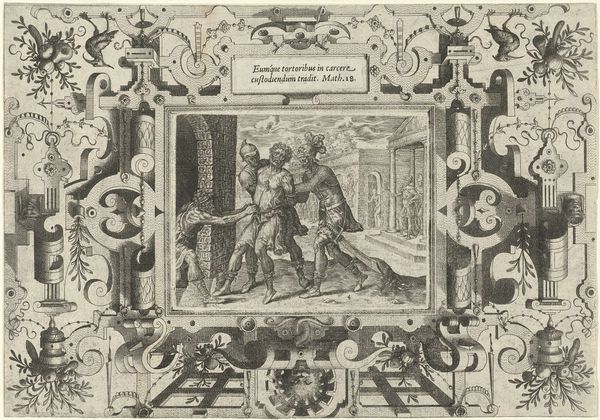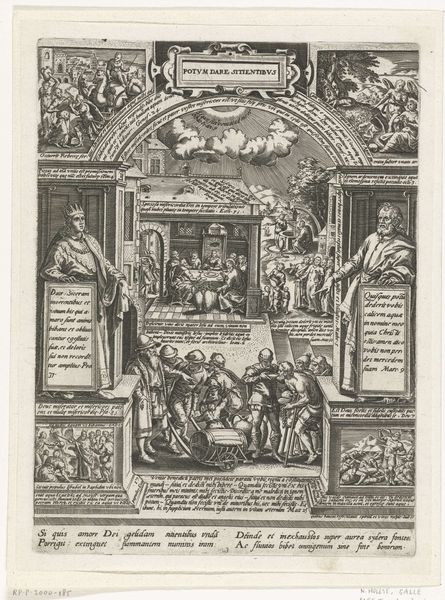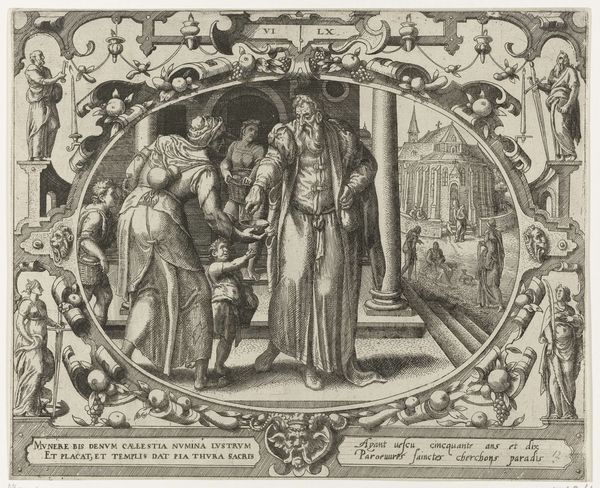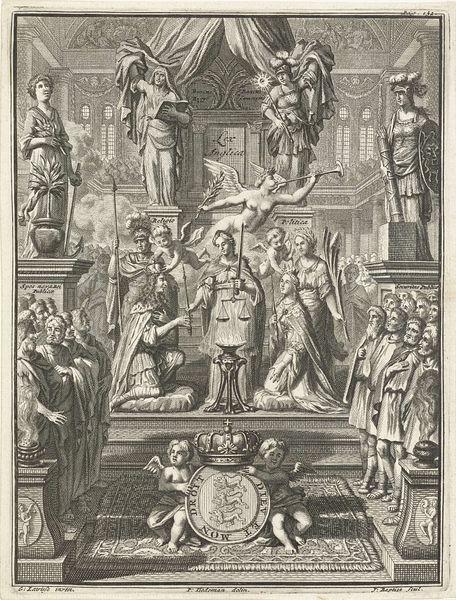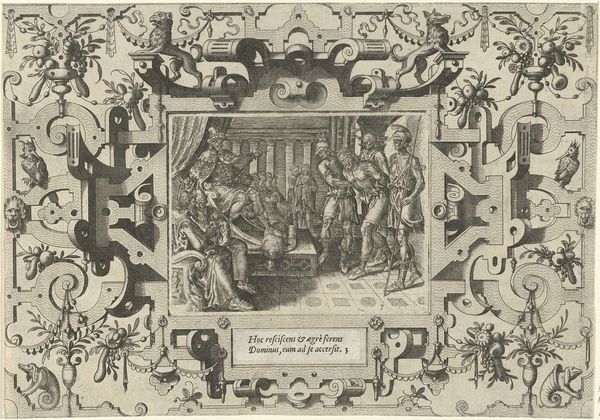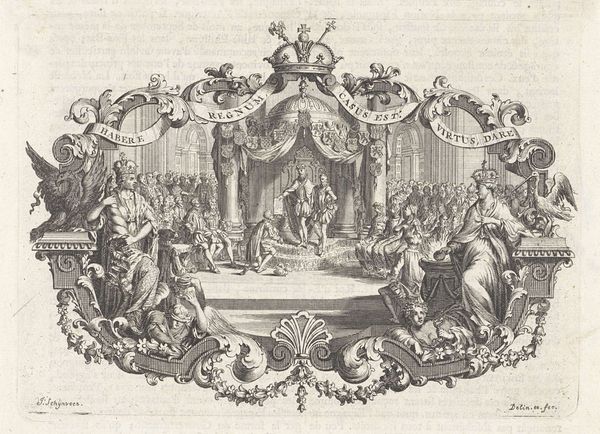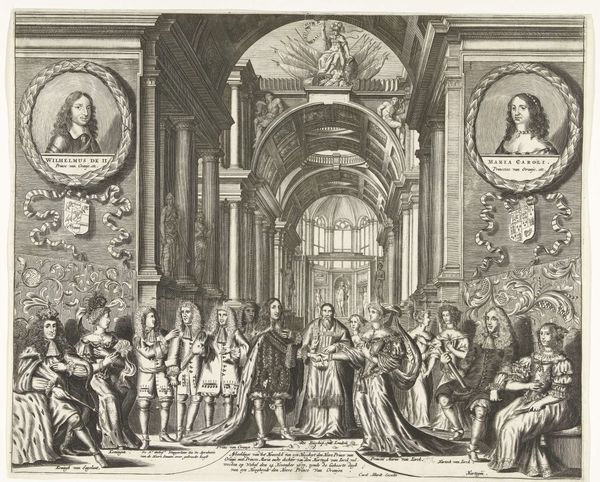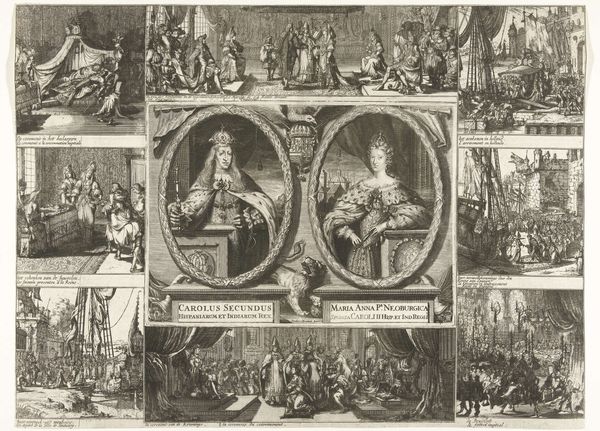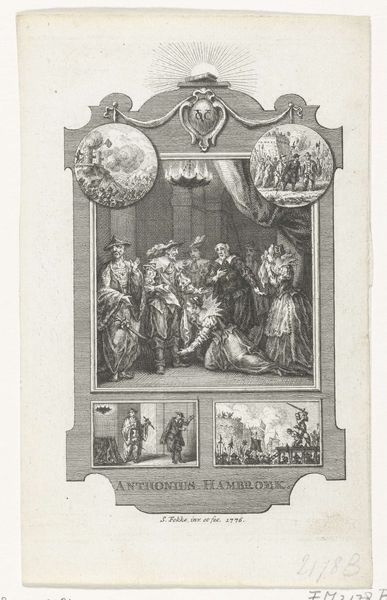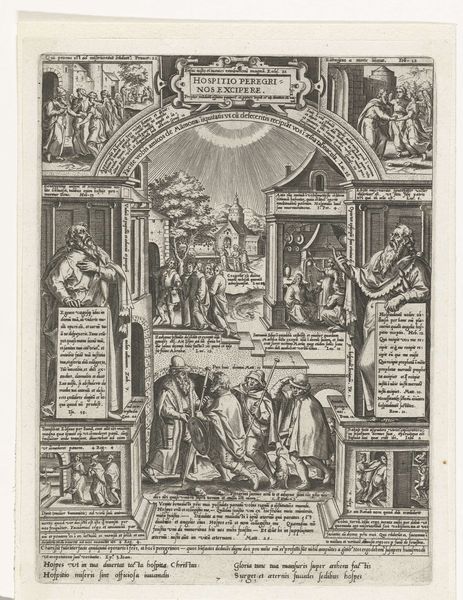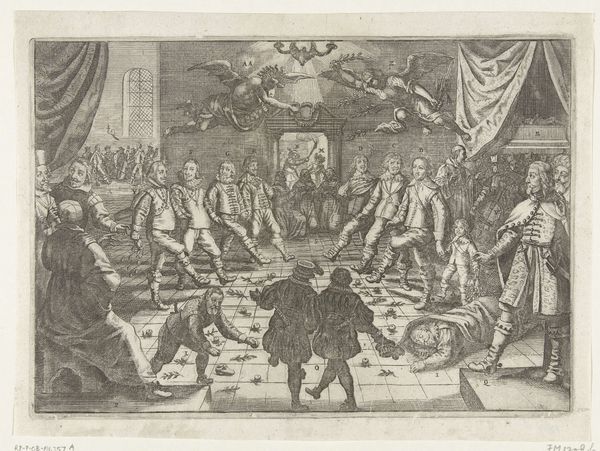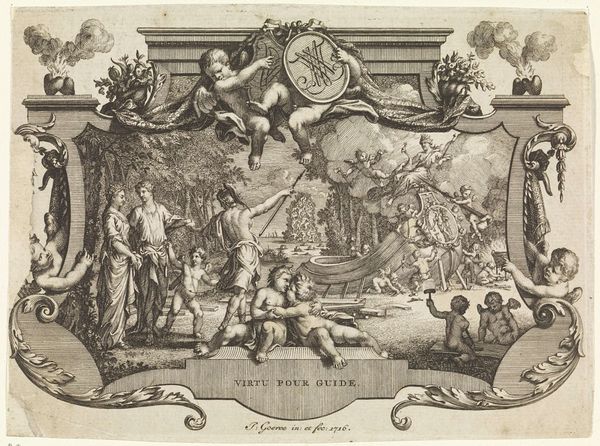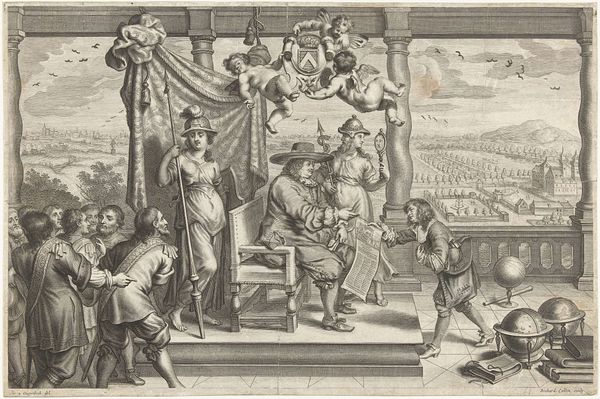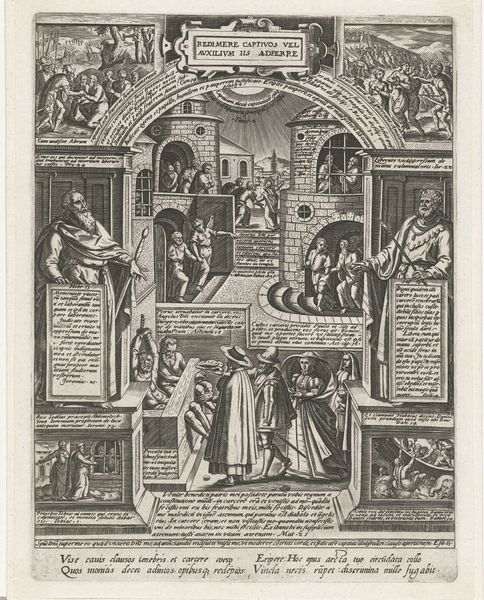
Allegorie op de verovering van 's-Hertogenbosch door Frederik Hendrik, 1629 1629
0:00
0:00
crispijnvandeiipasse
Rijksmuseum
print, etching, engraving
#
portrait
#
pen drawing
#
dutch-golden-age
# print
#
etching
#
figuration
#
line
#
history-painting
#
engraving
Dimensions: height 281 mm, width 369 mm
Copyright: Rijks Museum: Open Domain
Curator: Greetings. Today we examine Crispijn van de Passe the Younger's "Allegorie op de verovering van 's-Hertogenbosch door Frederik Hendrik, 1629," an engraving, etching and print residing in the esteemed Rijksmuseum collection. Editor: Thank you. The intricate lines and the sheer amount of detail in this print are striking! It almost feels like a carefully constructed stage play. How do you interpret the work’s composition, looking purely at its form? Curator: Note how van de Passe deploys the triptych format, creating a visual hierarchy. Observe how the central panel frames the figures of authority within an archway garlanded with symbolic elements. Do you perceive a calculated balance in the arrangement of portraits on either side? Editor: I see the portraits flanking the central scene, which are neatly organized in rows, providing a sense of order. Is the symmetry important to understanding the meaning? Curator: Precisely. The formal symmetry reinforces the political order of the Dutch Republic. Further, note the stark contrast in textures achieved through line variations. Can you see the strategic employment of light and shadow to sculpt depth within a monochrome palette? The figures, emblems and portraits form distinct structural zones that create a visual discourse between power, place and personages. How might the arrangement of the spheres and map add to this dynamic? Editor: It does seem intentional, especially with the spheres placed so carefully, flanking the map like sentinels! So, without digging too deep into its historical meaning, we can still read this image through its deliberate arrangement of shapes and textures alone. Curator: Correct. Consider that the intrinsic visual language provides a vital mode of understanding, independent of historical context. Close analysis allows for deconstruction of visual order as a form of rhetorical declaration. The beauty of art is appreciating structure! Editor: That’s so helpful, I am more enlightened appreciating its composition today, rather than focusing on the details I may not fully understand!
Comments
No comments
Be the first to comment and join the conversation on the ultimate creative platform.
